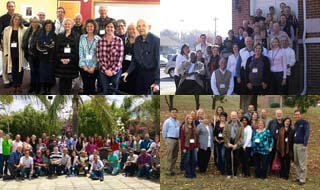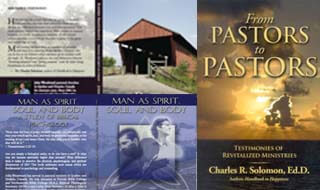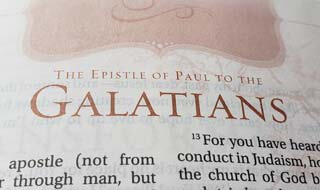“This do in remembrance of me” (Luke 22:19).
This inscription placed by the hands of the Master over the Feast of Love might well be made the watchword of our whole Christian life. The Lord’s Supper is a sort of microcosm, or miniature, of the believer’s life, and over every moment, every word and every action we may well inscribe, “Do this in remembrance of me.”
After good Archbishop Darboy had been murdered by the Paris Communists, they found upon the walls of his dungeon the sketch of a rude cross, with these four words marking its extreme dimensions: height, depth, length, breadth. To his devout spirit the cross seemed to measure the love of God and the grace of Christ in its height and depth and length and breadth.
The arms of that cross are wide enough to cover every need and every experience of our daily lives. Its foundations are deeper than our deepest sorrows, and our loftiest heights of rapture can never reach above its heavenly altitude. It is God’s measure not only of His love, but of our lives.
The medieval saints used to erect, in the center of the market square of every town, a simple cross, so that it came to be known as the Market Cross; and it may still be seen in many of the older towns of Europe. The simple and beautiful idea was that the cross should dominate all the business of earthly life, and that all transactions, interests and concerns should ever be under that shadow of the cross.
“Under the shadow of the cross” — how much this phrase suggests of sweetness, sacredness and practical consecration. Perhaps you are wearing a gilded cross, dear sister. Does the heart that throbs beneath it beat true to its holy meaning? Are the words that come from that throat, whose necklace is clasped by the symbol of His gentleness and suffering, in keeping with the cross you love to wear? Are the habits of your life suggestive of Him whose only marks of honor were the thorn rents, the spear gash and the blood drops of agony on Calvary?
Let us contemplate the cross in its practical relation to our actual Christian life.
1. Refuge for the Sinner
When the sinner comes to the deep and awful sense of his guilt and peril, what refuge can he find apart from the cross of Calvary? “Thus far did I come, laden with my sin,” wrote Bunyan, telling the story of the sinner’s refuge. Then as the strings broke and the burdens rolled away, there came the joyful song of praise,
“Blest Cross! Blest Sepulcher! blest rather be
The Man that there was put to shame for me.”
2. Refuge for the Tempted
When temptation comes and the newborn soul has found its first stumbling stone, what can bring deliverance and victory but the cross of Calvary? And oh, what new light comes as the soul begins to fully realize that Christ has purchased for it not merely a brief reprieve or a new probation, but a complete and everlasting vindication. Our sins have not only been forgiven, but obliterated; in fact, they have ceased to be our sins and have been assumed by the great Sin Bearer, and we are henceforth as free from liability for them as if we had never sinned! In the death of Calvary we have died, and we stand before the judgment and the high court of heaven in the position of those who have paid the full penalty for sin already and who, looking up in the face of heaven, can say, “Who shall lay anything to the charge of God’s elect? It is God that justifieth. Who is he that condemneth? It is Christ that died, yea rather, that is risen again, who is even at the right hand of God” (Romans 8:33,34).
3. Salvation from the Effects of Sin
Sometimes our past comes back again like great ocean billows threatening to overwhelm us. It is then tat the cross rises as a mighty barrier and breakwater, even as rocks resist the billows around their shores, and we find that instead of reaping the harvest of our evil sowing, there is One that has reaped the wretched issue for us and we are free. We do not have to pass through the processes of natural law or pay the full penalty which sin exacts in the present life; but we may claim complete deliverance from the wreck of body and brain, and from temporal conditions which might justly have been our heritage, and go forth into a life as glorious and free as if we had just dropped from heaven, the new creation of infinite love.[1]
4. Sanctification through the Cross
When we come to the great conflict with inbred sin we find once more that the cross has made provision not only for our justification but also for our sanctification. We do not have to fight alone the demon of depravity in our own hearts [the flesh] or slowly build up out of the wreckage of the past a holy character. But we find that the old man, as well as the old deeds, was crucified with Him, and that it is our privilege to lay off the nature of self and sin and put on the very nature [qualities] and life of Christ Himself “who of God is made unto us wisdom, and righteousness, and sanctification, and redemption” (1 Cor. 1:30). And as the process of grace goes deeper and reveals to us yet undiscovered depths of corruption, we shall find that the cross is deeper still and that with every new revelation we may continue to “put off” the old man with his deeds and … put on the new man” in a loftier resurrection life, as step by step we come to “know him, and the power of his resurrection, and the fellowship of his suffering, being mane conformable unto his death” (Col. 3:9,10; Phil. 3:10).
Part 1 of 2, From A. B. Simpson’s book, The Cross of Christ
[1] Simpson taught that physical healing in this life, though not guaranteed, was encompassed in Christ’s atonement. Most would consider that the usual physical consequences of unhealthy living are included in the “sowing and reaping” principle (Gal. 6:7). However, Simpson would exhort us to intercede for physical healing as another gift of divine grace (James 5:14,15).

















